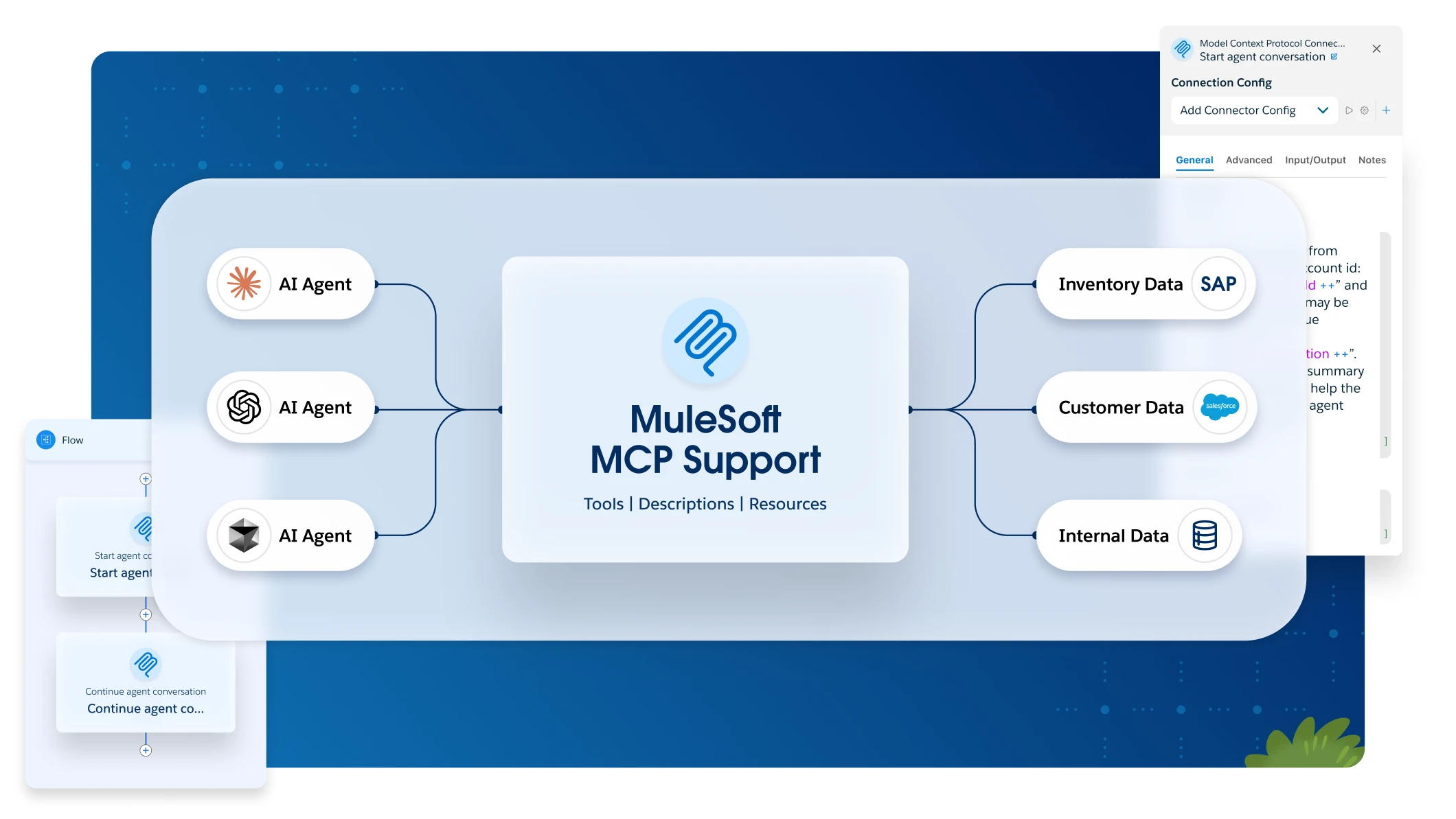| Field Name | Description | Required | Notes |
|---|---|---|---|
Base path |
Specifies the URL prefix for all server paths, relative to the host root. It must start with a leading slash |
Yes |
|
Client provider |
Specifies a client provider for the Server. |
No |
Anypoint Platform acts as the client provider by default. To configure an external client provider, see Client Providers. |
Server label |
Specifies a label for the server instance. |
No |
If you have multiple managed instances of the same server, add a label to differentiate each instance from the others. |
Advanced Options |
|||
Consumer endpoint |
Specifies a proxy application’s address for consumers to use for sending requests. |
No |
Adding a Flex Gateway A2A Server Instance
Use Flex Gateway for any A2A servers that need a flexible and performant gateway that works with distributed and microservices environments and fits into your CI/CD environments.
The following diagram shows the server instance’s upstream and downstream configurations. In this configuration, the downstream service is the service making requests that are completed by the upstream server. These terms represent the direction of dependency, not the direction of information.

Add a New A2A Server Instance
-
Navigate to Anypoint Platform > API Manager.
-
In API Administration, click Add and select Protect A2A server.
-
Select a Flex Gateway to deploy the server instance to from the list under Select a gateway.
If you don’t see a Flex Gateway listed, or you see a Flex Gateway but its status is Not Running, See Install Flex Gateway and Register and Run in Connected Mode for more information.
-
Click Next.
-
Select an A2A from the following options:
-
Select A2A server from Exchange: If you have an A2A server shared with you through Exchange that you want to manage.
-
Select the server from the list under Select A2A server. You can search for a specific server if needed.
-
-
Register a new A2A server: If you want to create a new A2A server asset.
-
Enter a A2A server name for the new A2A server asset.
Your server is published to in Exchange after it is protected.
-
-
-
Click Next.
-
Configure the downstream configuration settings:
Managed Flex Gateway
Self-Managed Flex Gateway (Connected Mode)
Field Name Description Required Notes Protocol
Specifies whether to use HTTP or HTTPS.
Yes
If you select HTTPS, specify a TLS context for inbound traffic.
Inbound TLS
TLS Context used for the inbound HTTPS traffic.
No
Configure a TLS Context for Flex Gateway before adding a TLS Context to your server.
Port
Specifies the number to use if the displayed port is incorrect.
No
Server instances can share the same port across the same target if the Base path is different for both instances.
Base path
Specifies the URL prefix for all server paths, relative to the host root. It must start with a leading slash
/.Yes
Server label
Specifies a label for the server instance.
No
If you have multiple managed instances of the same server, add a label to differentiate each instance from the others.
Advanced Options
Consumer endpoint
Specifies a proxy application’s address for consumers to use for sending requests.
No
-
Click Next.
-
Configure one of the server upstream configurations:
Field Name Description Required Notes A2A server upstream URL
URL to access for the A2A server. This must end with a
/.Yes
For example, you can use the URL of your server asset in Exchange.
Outbound TLS
TLS Context used for the outbound traffic to the upstream service
No
Configure a TLS Context for Flex Gateway before adding a TLS Context to your server.
-
Click Next.
-
Review your selections and edit them if necessary.
-
If you are ready to deploy, click Save & Deploy. Otherwise, you can select Save, to save the API instance and deploy it at a later time.



